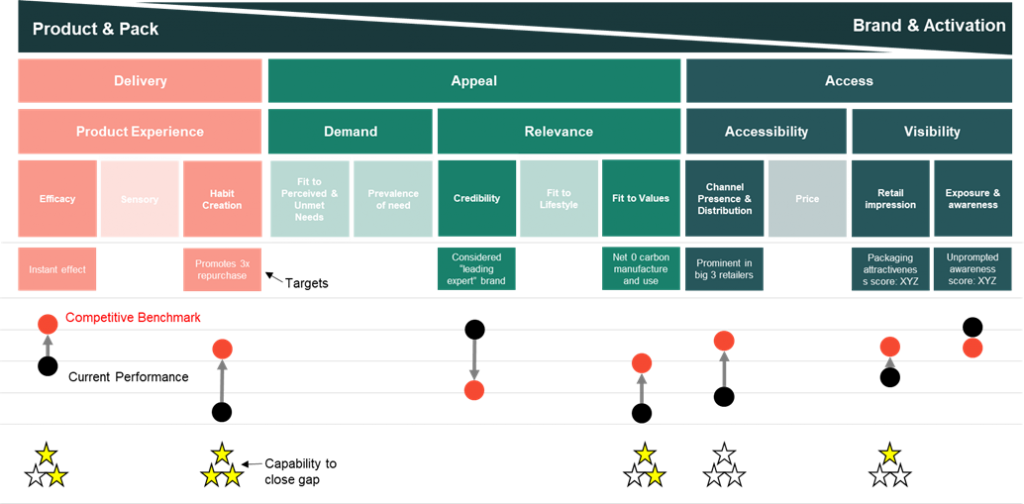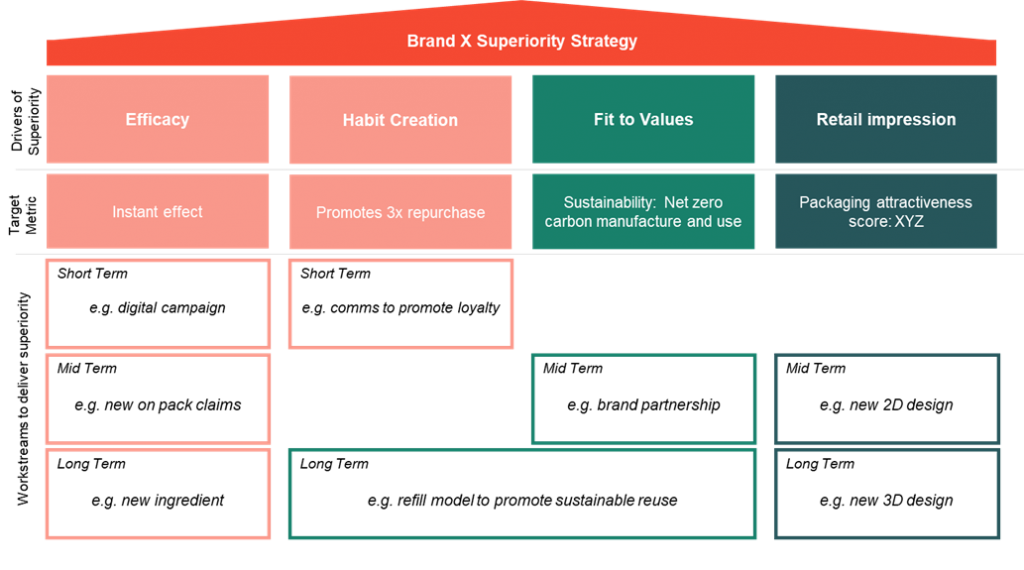What’s your innovation superiority strategy?
Tom Carvell, Principal on the STRAT7 Advisory team, unveils why superiority in innovation is so important right now and how you can make your innovation stand out from competitors through a data-led approach.
Why is superiority so important right now?
We are all too aware of the effect of inflation and cost-of-living on shoppers; purchasing power has weakened and consumers are looking to maximise the value of the goods they buy – especially in discretionary categories.
There are two ways to compete on value: make it cheaper or make it better. The latter is more attractive to brand builders who don’t want to compromise “premium-ness”, but will be highly competitive and only the most superior proposition will win.
How do I make my innovation superior to competitors?
So, how do you create the most superior proposition? Depending on who you are, your answer to this question may be completely different. If you work in product development, you may say it’s all about product efficacy; if you’re in marketing, comms and messaging may seem more important; and if you’re in sales, channels and distribution might be the top factor.
All these (and more) are important. But some factors play a bigger role than others depending on your competitive landscape, product type and consumer preferences.
For example, if your product has industry-leading claims but is outshone on the shelf by beautiful-looking competitors, then doing more claims research will be wasted. Likewise, if consumer preference is mostly based on availability or sensory experience, then ploughing money into developing the latest imperceivable scientific ingredients won’t give you ROI.
The most efficient way to achieve innovation superiority is by focusing on your category’s most critical drivers of superiority. STRAT7 has built a process to unearth and innovate on these drivers:
1/ Superiority Driver Analysis
Start broad. Set out the measurable factors that you think could influence consumer preference, being sure to consider the full spectrum from product design to brand visibility. Some CPG examples are below.

An example hypothesis framework showing potential drivers of superiority.
Now you must determine which of these factors are true drivers of superiority. At this point it is essential to eliminate bias and opinion, so we recommend adopting a data-led approach by measuring how each factor (or combination of these) correlate with success (measured through a particular metric such as category share, net revenue, sales growth).
This step requires a huge variety of inputs like transactional retail data, product test reports and brand equity trackers, all of which need to be structured, harmonised and assessed using statistical techniques. We have a variety of tools at our disposal, from simple analysis through to advanced machine learning algorithms, alongside our strat7.ai toolkit for unstructured data. Our in-house AI tools – like topic modelling – are a huge asset here to eliminate noise and instead extract and size metrics from vast online data sources.

An example superiority framework showing actual drivers of superiority.
2/ Competitive Benchmarking
You now have a shortlist of factors which correlate to success, but the story doesn’t end there. Just because a particular factor drives superiority, doesn’t mean it is the right thing for you to focus on. You must isolate the factors where you can make the biggest difference most efficiently.
Start by plotting your performance against competitors and looking for the biggest gaps. Then eliminate the drivers which don’t match your capabilities and existing growth strategy. To do this you may need to define more specific targets under each driver. What you are left with is where you should focus your innovation strategy.
If you find yourself with nothing left, then it’s time to ask yourself some difficult questions. Is your growth strategy preventing your from having superior innovation? Do you need new capabilities?

A superiority framework showing current performance against category norm.
3/ Strategy Building
Now that you’ve isolated the focus areas, it’s time to ideate and create workstreams which will deliver. Innovation superiority will be built over time through a mix of commercial and product innovation so make sure your ideation reflects this. Don’t be distracted by the most novel and shiny ideas – you’ve spent a lot of time determining your drivers of superiority, so stay focused on them. If it doesn’t fit with the plan, be disciplined and deprioritise.
When you have feasible, viable and desirable innovation ideas you can plot them against your drivers to create your superiority strategy!

An example superiority strategy showing workstreams which ladder to superiority.
With new strategy must come a certain degree of behaviour change, so it’s important to take the time to embed it into the organisation. You can do this by ensuring all factors are involved along the process and piloting the learnings on a smaller scale (e.g. test market) first to prove the impact before rolling out wider.
Although its only three steps, there is a lot of work required to build a superiority strategy — and just like any time a change is needed, an external perspective can be valuable to cut through internal bias.
Get in touch if you are interested in understanding and delivering superiority for your brand.




